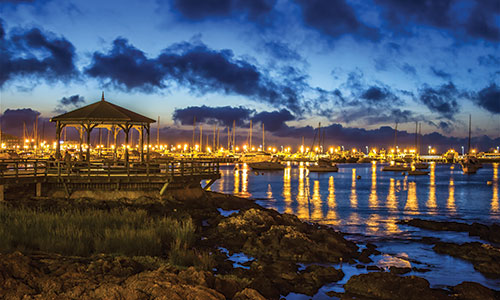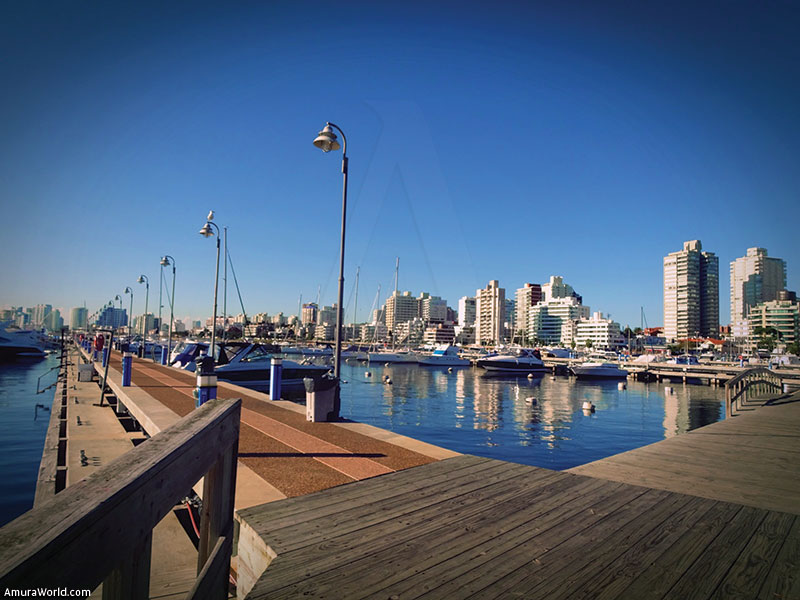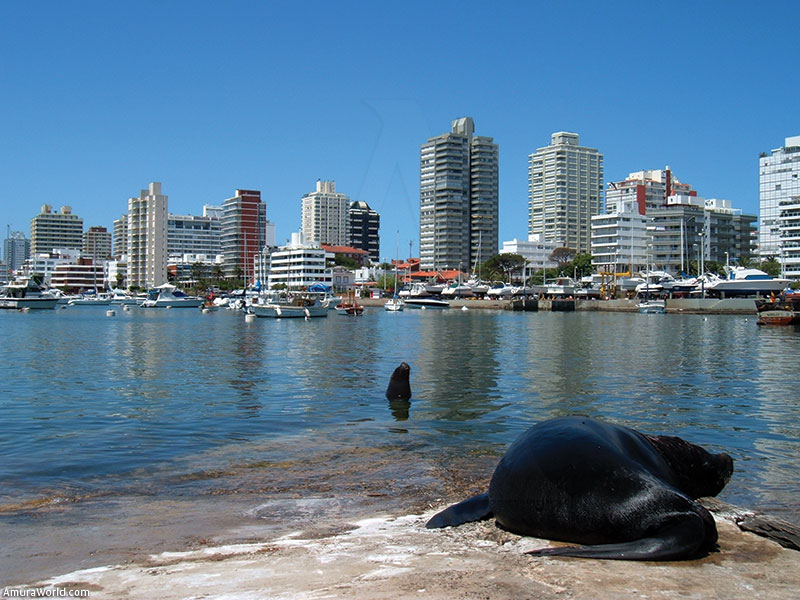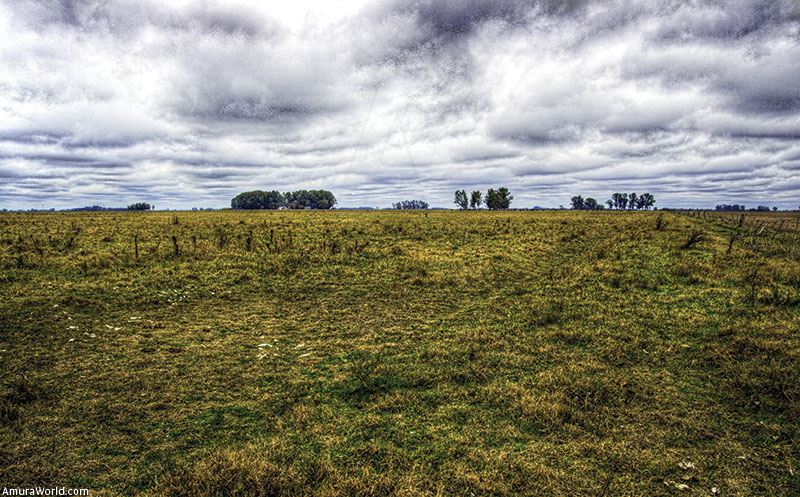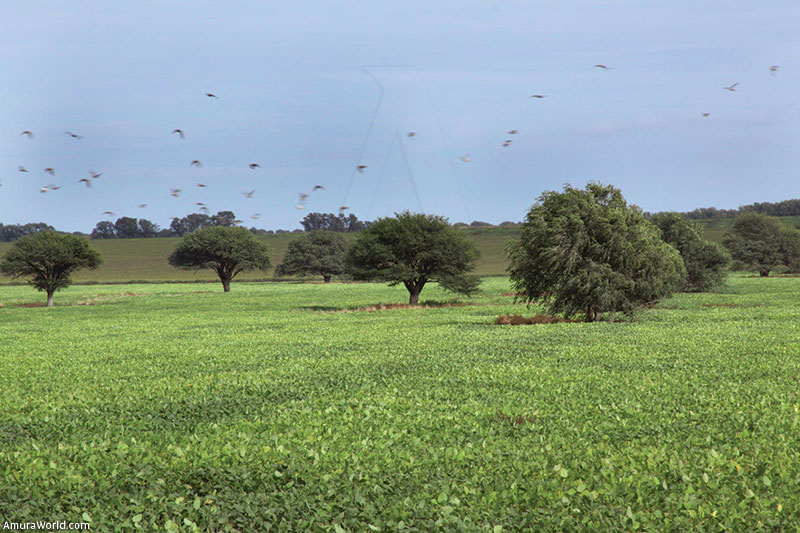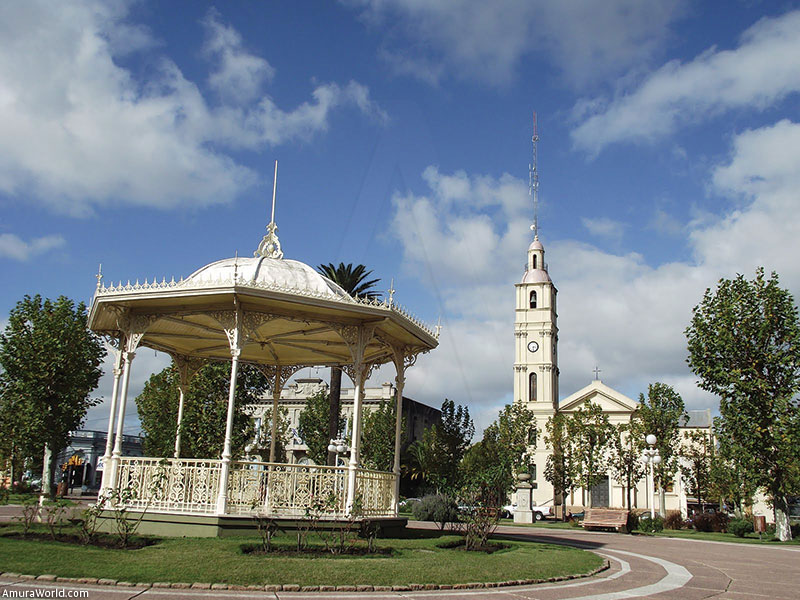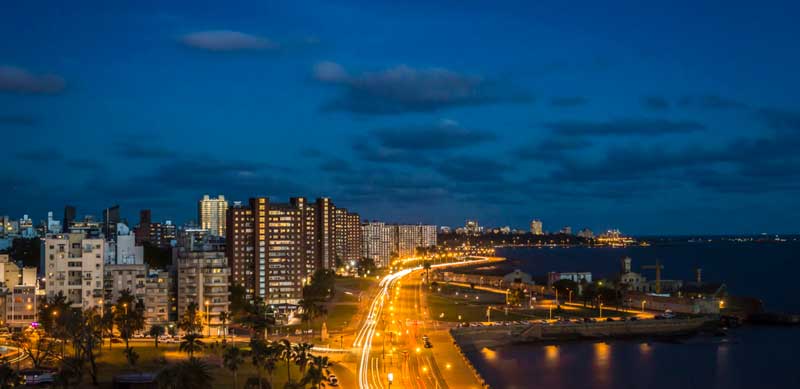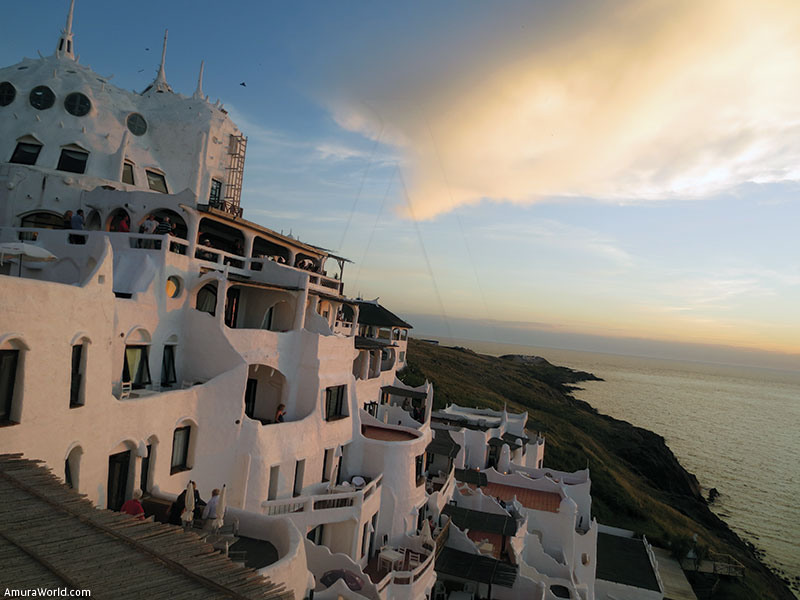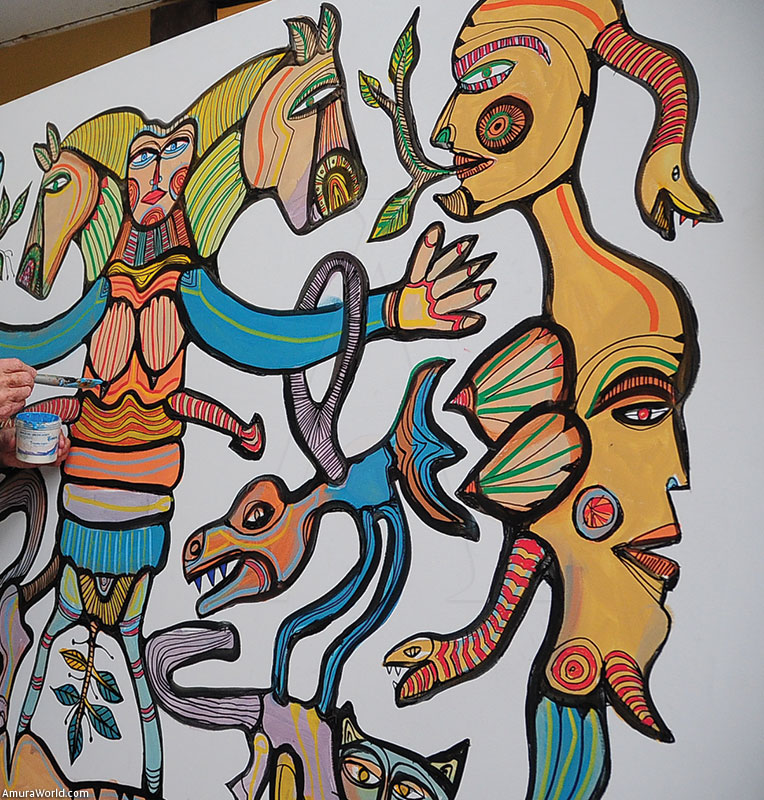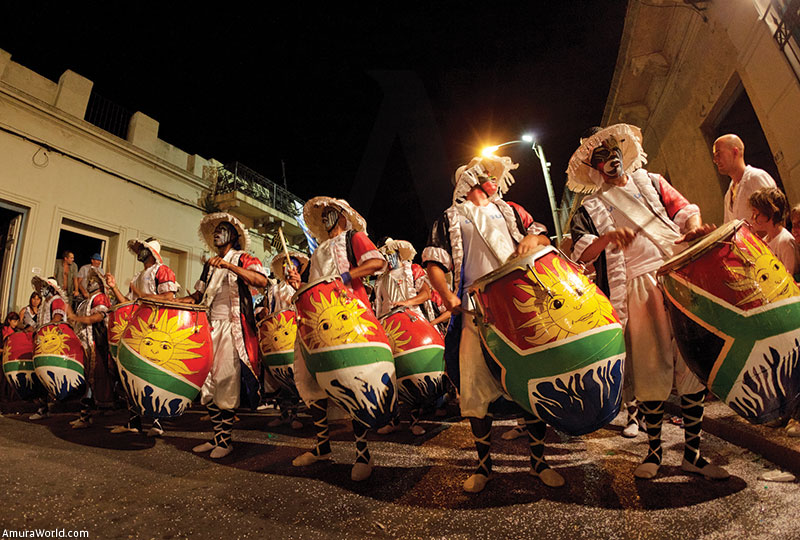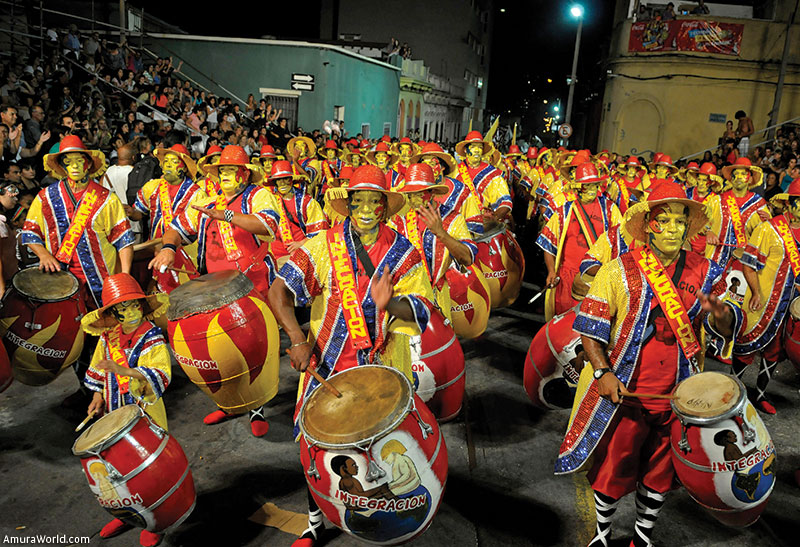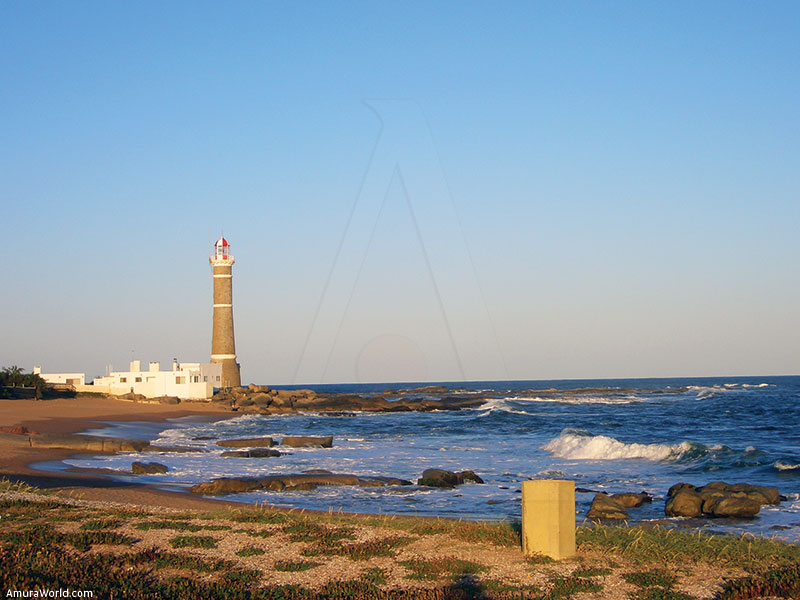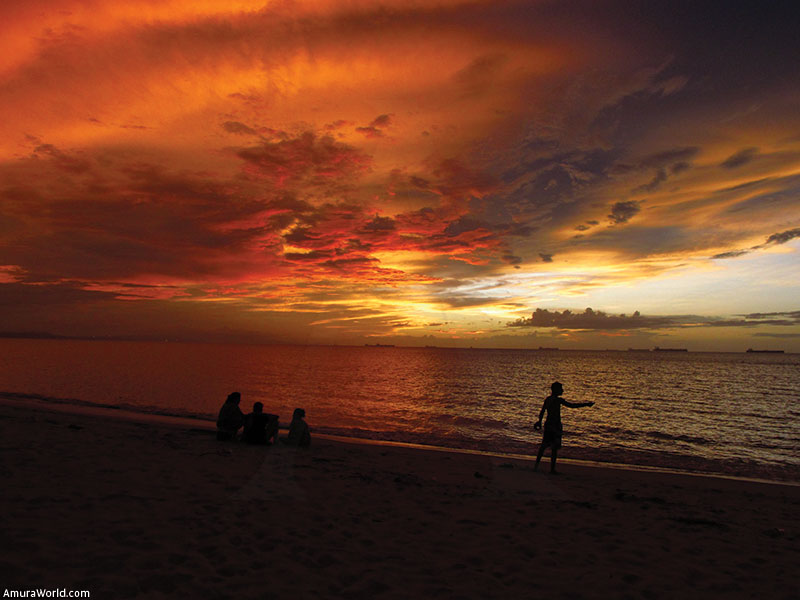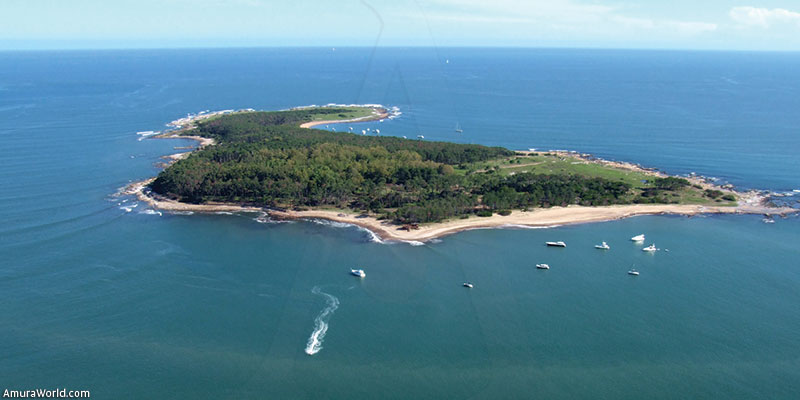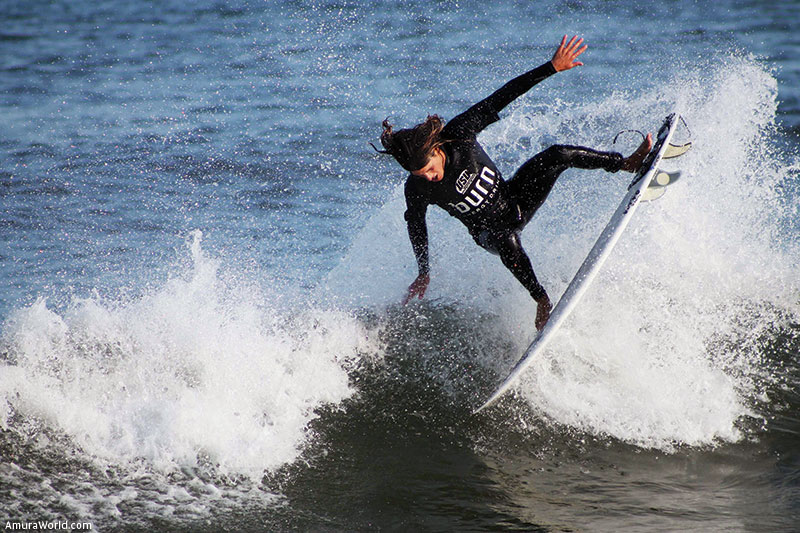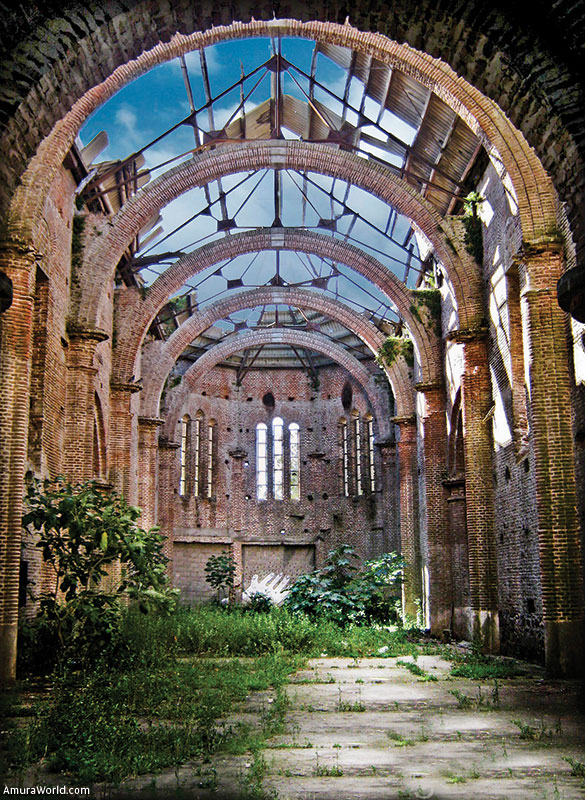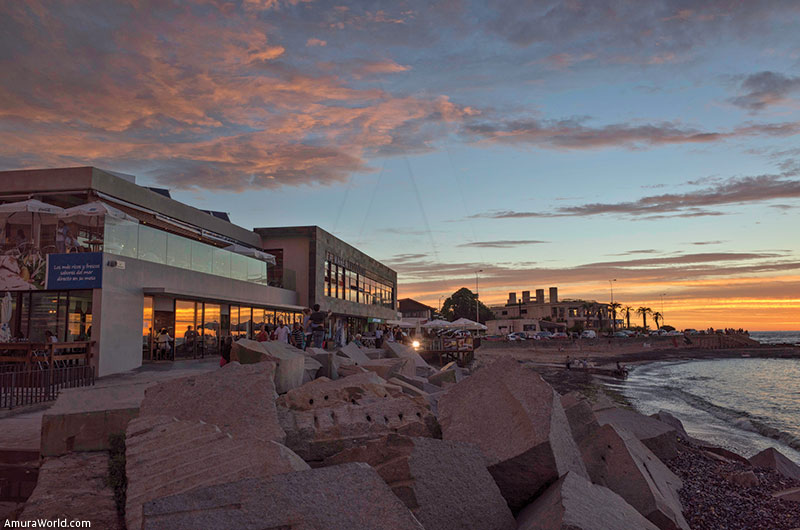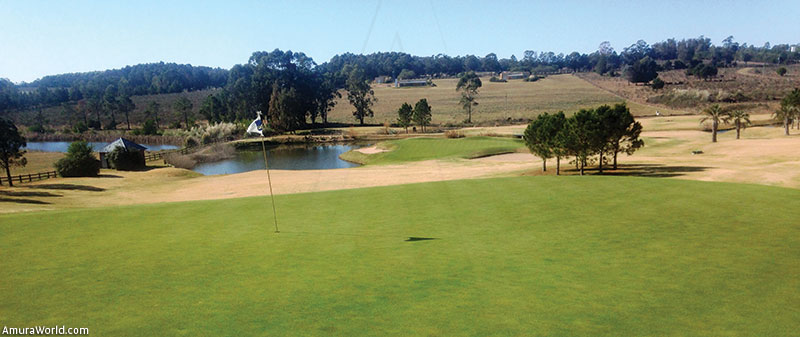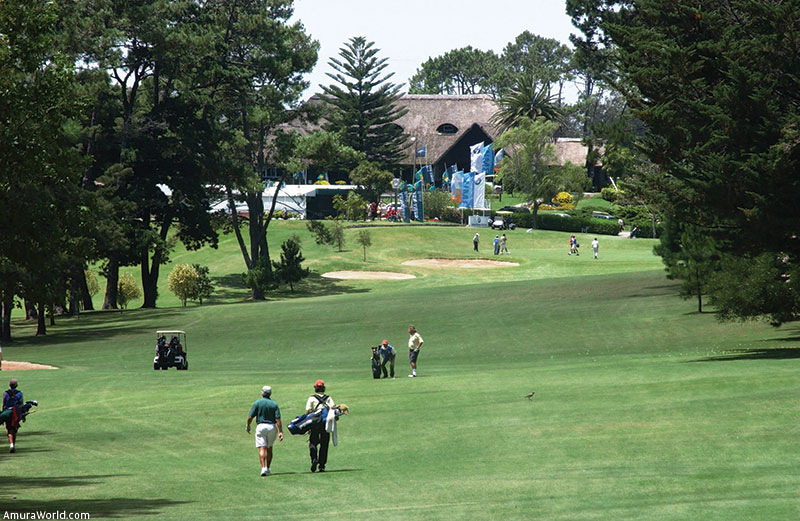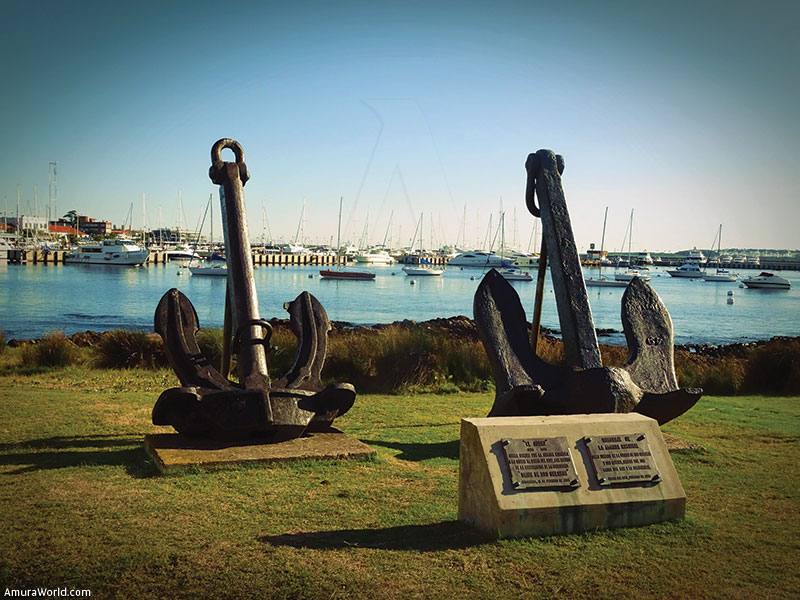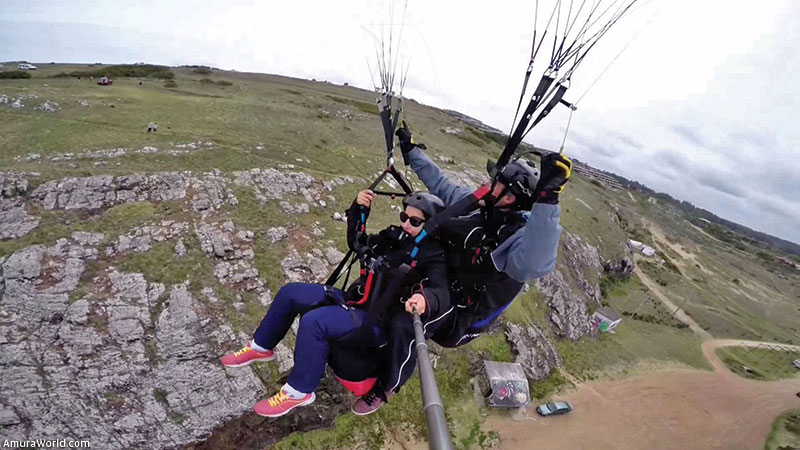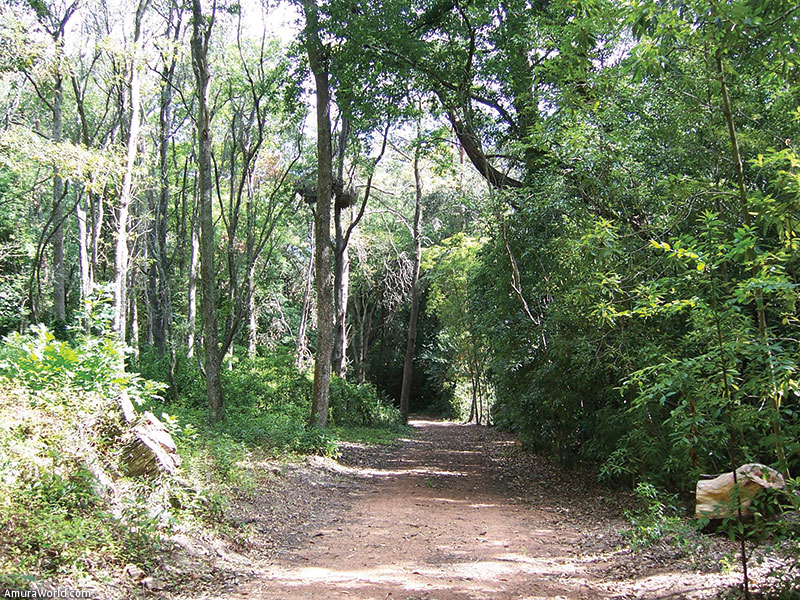A pearl with light of it’s own
Punta del Este receives us with arms wide open to show us that this little South American paradise is full of charm and color. This city isn’t just a port destination, it also provokes dreams. It’s a place filled with art, culture and history.
Situated on the most southern point of Uruguay, in the Maldonado district, Punta del Este is known internationally as one of the most important Spas in the South Cone; a ribbon of land that separates Rio de la Plata from the Atlantic Ocean, it’s the gem of the crown that honors this latitude.
Between history and legend
The Oriental Republic of Uruguay is one of the places that possesses more portuary history after Argentina. To meet it is to go back in time and listen colonial legends and pre columbian traditions.Located amongst Pampean lands, wavy hills and furrowed by meadows of little elevation, Uruguay is revealed in front of the eyes of whoever visits it.
Forged as a country of immigrants, this destination is culturally rich thanks to its European influences. From the mid 1800’s Spaniards, Italians,French, Germans and Polish began to arrive to Montevideo. But let’s go even further back in time, to the moments where the roots of this country were created: charrúas is the name of the first people who inhabited what is today Uruguay; its expansion reached the current Argentine provinces of Santa Fe and Corrientes, abutting with what is known today as Rio Grande Do Sul, in Brazil.
The charrúas formed a vast family with the pámpidos, a large group of aboriginal ethnics that lived on the plains of Chacopampeana and the extra Andean Patagonia. Despite not having clear answers toward the origin of the word “charrúa”, several theories have been exposed -all of them despective-, “the rash”, “the destructores”, “the jaguars” or “the painted”, however, the approach to a more precise root descends from the Galician language. This word names certain ancient wood masks that date from prehistoric times; they were used in celebratory occasions, such as carnival.
The arrival of the European ended the relative peace that reigned amongst the aborigines; the Spanish explorer, Juan Díaz de Solís, sailed Rio de La Plata, and would set foot on Uruguayan lands a summer morning of February 1516.
“We always went bordering the land, sometimes, mountains would be discovered, other times, we would see grand cliffs and people from the Rivieras: in Rio de la Plata we saw a lot of indians and people, who with great interest watch our vessel go by and with signs they offered everything they possessed, putting their things on the ground. Juan Díaz de Solís, wanted to see who were these people and take some to Castilla.”
Fragment of the logg-relation of Herrera
The Spanish colonization took time to be made, the region wasn’t considered important, the mineral riches of Peru and Mexico were not comparable to the few deposits found in Uruguay. After uncountable expeditions, in 1667 seven Oriental mining missionary villages were founded. With them, civilization arrived to this part of the country. Changes wouldn’t stop there, in 1680 the Portuguese inaugurated the city of Buenos Aires, Colonia do Sacramento. This settlement would be a point of conflict between Spain and Portugal for a long time. The foundation of Montevideo in 1724, gave commercial aperture to the only natural port of Rio de La Plata.
Enticed by the constant movement and cattle, a particular group of people began to arrive from Brazil and Buenos Aires. This fluctuation would bring a new aspect to popular culture and it would grant a new lifestyle and social ideology that would change it all...
Amazing Pampa
The gaucho makes an appearance thanks to the European and Indigenous miscegenation that emerges during this period. With this new influence, the locals were displaced to Jesuit missions in the North. The gauchesc culture is marked by several components that relate to an importance toward the ancient rural life -until this day-; the horse, the guitar, the mate and cow meat, as well as solidarity, loyalty, courage and hospitality are only some of it’s most important characteristics.
A different perspective
With the change of times the Revolution of May took place, it began in Buenos Aires in 1810; this new movement was rejected by the upper classes of Argentina and Uruguay which represented the commercial Spaniard monopoly. Contrary to its neighbors, the small and medium Argentine landowners raised in arms. We meet José Artigas during this uprise, he was the captain of the insurrection. His Republican and Federal ideal, along to his proximity toward the slaves and indians and his project of equitative land share, positioned him at the front of this movement. Artigas headed the Federal League, which at the time was formed by the Oriental Band which represented the current Argentine provinces of Córdoba, Corrientes, Entre Ríos, Misiones and Santa Fe.
By 1816, all the notion toward the Oriental Band would change, due to the invasion of the Portuguese army; the support of this movement would be vindicated by the wealthy class of Buenos Aires and Montevideo, who were tired of the chaos Artigas represented. The outcome for Artigas was a sad one, it was filled of isolation, he had to take refuge in Paraguay in 1820, were he would die 30 years later.
In 1823, with Brazil’s independence from Portugal, the Oriental Band would form again under the name “Cisplantina Province”.
The Oriental Republic of Uruguay is born
It was in 1830 that the Oriental Republic of Uruguay concibes it’s first constitution. However, equity wasn’t equal at all, the majority of it’s population was incapacitated to vote. After the charrúa extermination handfull was taken to France to display as curiosities, giving the entire race an end. The second half of the XIX century was dominated by civil wars between the two political collectives of the country: The “White” Party of National, linked to the campaign and landlords and The “Red” Party more sympathetic to the European Capital and liberal ideas. A weak State and a rural population used to fight posibilitated uprises.
Contemporary Uruguay
During the last century, Uruguay’s history has processed many transitions. At the beginning of the XXth century, the charrúa country was proper and lived a state of well-being which lasted until the 1950’s.
By 1973, the government of Uruguay was taken my military forces and the country entered a dictatorship that lasted 12 years under which the population lived under constant oppression. In 1985, once the military reign was over, civil right were established and the country once again began to normalize. This ended a moment of anguish in the history of Uruguay.
New horizons .
Portrayer of a turbulent start, this country has stood up, it’s history is one of constant overcoming. The warmth of the Uruguayan is undeniable, as well as its cultural bonds and hospitality; without a doubt this corner of the map offers an self improved version. It’s roots are a base for this culture to revindicate, it makes us understand that it’s past doesn’t chain it and suddenly, when we discover this latitude it embraces us in an unexpected way, as if so much sadness didn’t happen.
Today, Uruguay is a prosperous country; cosmopolitan and full of allure. It grants an ambiance of relaxation, fun and singularity.
Hello Punta del Este!
South America’s Monaco is a jewel embroidered on seafoam, sand and ocean. To walk it’s street is to participate in it’s daily heartbeat and form part of its history. Punta del Este embraces everyone who visits and it offers an unforgettable stay complemented by it’s people, gastronomy and atmosphere.
Casapueblo, an unmissable visit
This set of constructions face Punta del Este’s ocean; it’s characterized by its radiant white that makes an astounding contrast with the blue of sea, giving it a Mediterranean air; this was the purpose of the artist Páez Villaró, who when building it said: “ I ask forgiveness to architecture for my baker soul”.
This place hosts the house-atelier of the artist, as well as a museum that possesses a great quantity of artwork. All of this is confirmed by the diversity of balconies and terraces that look to the sea, it generates great dynamism between its visitors and architecture.
It’s worth your time to pay a visit, the building itself is a masterpiece. Our recommendation is that you look for a quiet spot to sit so you can absorb the tranquility of this space.
Fazenda Lapataia
However has visited this part of the world will think of only one thing immediately: dulce de leche. Lapataia farm is an excellent option for those who wish to learn about the famous methods and production in the creation of this sweet, or you may eat this delightful Uruguayan candy. The tour begins with a brief explanation regarding the pasteurization of the milk, passing through its packaging, finishing with the sale of this creamy dessert, which is available in the store next door. Visitors can taste delicious crepes filled with a generous amount of fresh milk. The farm is also an excellent option for children, it counts with infinite activities throughout for them. It’s not completely necessary to make the tour if you don’t find it interesting, but something you MUST do is purchase dulce de leche.
A port with life of it’s own
When in Punta del Este consider it a duty to walk it’s port. It’s massive, yachts and boats are seen everywhere we look and during summer time it’s the place with most glamour in South America. We recommend a walk at night, everything is illuminated and it’s less hot.
Gastronomy with a view
Whenever possible we must enjoy the postcards that are granted to us by Punta del Este. Some of can them be appreciated during lunch time -breakfast or dinner- in a terrace. The gourmet proposal of the Ramblas are vast and varied.
Few things are comparable to a table at El Secreto, Virazón, or The Cantine at the fishing club, despite their culinary skills not being grand, it’s a good plan to sit in one of these places and enjoy a drink. .
During summer this places are too crowded, but in the sunny autumn days you can enjoy a nice time.
Rambla General Artigas
This is a forced stroll. If you don’t have a plan for lunch, walking on the Rambla is a great option. Is holds some of the most beautiful views, filled with sailboats, yachts and fishing vessels, all in conjunction make a picturesque portrait. This path surrounds the entire port and makes us encounter it’s seawalls, this gives us the opportunity of watch the sunsets along the shoreline.If you are returning from the beach, keep in mind to bring a sweater, by nightfall it starts to become chilly. If you find yourself here at dinner time, don’t worry, the restaurant scene is wide and delicious.
Gorlero Street
We welcome you to one of the main streets of Punta del Este! This avenue crosses the entire Peninsula in a longitudinal form from beginning to end. It finishes at “the true tip”, where the lighthouse is located.
During the early years of the Spa-city, famous shops flooded it’s streets; all sorts of businesses, restaurants and bars could be seen one after the other. As Punta del Este began to expand outside the Peninsula it began to go within the continent, encouraging the diversity of businesses found here. However, Gorlero still maintains it’s magic and movement, specially with those who reside in “la vieja punta” and walk the city’s downtown.
A drum reunion
On the previously mentioned street, Carnival comes to life each year; this encounter is a delight for locals and tourists alike. It’s a very fun and popular party; there’s music, dancing and drum beats everywhere.
It’s important to understand that in Uruguay, specially in its capital, Montevideo, candombe, which was brought by the African people who migrated to these lands, is a cheerful dance that comes to life at every party.
An encounter with the past
Exactly at the tip of the peninsula, we find a geographical accident which is seen as a little dot on the map; it’s here where the lighthouse of Punta del Este and the church of Candelaria are located. These are two relics of the most ancient part of town; this place was the first neighborhood, it was constituted by small chalets. These were Punta del Este’s first edifications and for our taste, this is the most beautiful part of town to lodge, although it’s not trendy.
As well as having an ancient sort of vibe, the sea is only a step away, and to be honest, to behold this sight is an experience; the calm sea is on one side, this is where Rio de La Plata mixes it’s waters; on the other side you can see the wild sea which is part of the Atlantic Ocean.
Behind the lighthouse you may find a little church, in front of it, there is a small plaza where the flag of Uruguay is located.
La Barra Beach
This beach, as the rest that surrounds it, is much more family oriented than others. It usually doesn’t have great resting points and almost all the houses have a direct access from the ocean, without streets that interfere. There isn’t any loud music or special events, only tranquility. The beach is located at the outfall of the Maldonado stream, reason why it’s important to stay alert despite it’s supposed steadiness.
The sand vibrates under your feet when in the water, this phenomenon is provoked by the braking the stream makes once it enters the sea. Lifeguards are on duty from 10:00 am to 7:00 pm and there’s always salers on the beach; water, ice cream cones, sandwiches, corn, artisanal jewelry, clothes, hats and tunics are sold here. It’s normal to see large families of dolphins, this is why the little ones end up stranded on the beach, situated in the Maldonado District,between the streets of Acuña de Figueroa and Burnett.
Sunsets in La Mansa and Gorriti Island
Almost every sunset of the year -as is a miracle occurs-, is quite magnificent, varied and unique. The sun grants liquid gold and the moon silver. To watch the sunsets at La Mansa is one the things that <<must>> be done. It’s an experience that isn’t lived elsewhere; the colors are mesmerizing and unrepeated, the sensation it inspires is moving. Another proposal to experience this natural display is Gorriti Island.
Surf at La Brava
This is one of the main beaches in Punta del Este, who doesn’t allow us to forget it’s one of the top Spas in the country.
It’s waves make honor to it’s Spanish name; they want to be conquered by any experienced surfer. This is an astounding spectacle...we have never stopped mesmerizing over the skill of those who practice this sport.
The fingers of Playa Brava
The hand of Punta del Este is located at one of the stops known as the zone of Playa Brava. Here we can find a sculpture of a hand that emerges from the sand. A monument popularly known as “monument to the drowned” -despite the author reluctantly saying it’s not homaging that-, it has stood here since February of 1982. The 4th stop of Playa Brava is a place where everybody takes pictures and observe while the waves pummel. The masterpiece holds the meaning of “the presence of man in nature” and some monuments by the same author can be seen in other countries. In fact, the hands can be also found in Atacama, Chile.
La Barra Golf Club
We know that for those hardcore golf fans vacations without this sport may seem eternal. However, we have the answer to your prayers: located 5 km from the center of La Barra in Punta del Este, this golf club offers all the services and commodities.During summer -high season- players may not enter without a handicap.
This place was inaugurated 1994, to this event Uruguayan players Gonzalo Vidal and Víctor Paullier, who got the intendency’s authorization in 1992, for the construction of these courses, in the so called Cañada de los Flamencos in La Barra of Maldonado.
In its beginning it counted 15 holes, but a few months later it was ready with the corresponding 18. Throughout it’s 6,343 yards, the course possesses several water mirrors that serve as obstacles. The tees, fairways and greens were built through “Penk Cross” technology, under the most strict norms of the USGA.
The tournament season extends from December to February and several important majors take place, The seniors championship, the Rolex Cup and the Open of La Barra as well as the very own club tournament.
Cantegril Country Club
The first golf course that ever existed in the facility was built in 1929, when the area was known as San Rafael. This place filled with hills, where only pines and eucalyptus existed; it’s soft undulations and a well of sweet water, served as the base of it’s creation.This courses has profuse woods and an excellent view of Isla de Lobos, this is possible due to the low altitude and scarce vegetation towards the coast.
The majority of the club members were from Argentina; the design of the golf courses was in charge of a North American that had to travel from Buenos Aires, along with surveyor; both specialists began to make the dream a reality of those who began to believe that this place would be “the jewel of South American golf”.
Punta Ballena
Exactly 18 kilometers away from Punta del Este, Punta Ballena unfolds, here we find Laguna del Sauce, which results a picture filled of memories. This place craves outdoors activities and nautic sports. Its sights are quite impressive, the hill of Punta Ballena is the marvel of this zone. From its top you can see a unique scenery, the Atlantic Oceans salutes you while it opens under your feet.
The Grouts
This natural attraction is formed by the ocean, it’s located at the heart of Punta Ballena; since the 7’s decade until the 90s; this salty water discs are popular amongst the locals, it offers an impressive sight of Punta del Este´s skyline. This site was once pretty concurred and it counted with a unique decoration, however, this has changed thanks to the constant expansion of the city.
For Nature Lovers
Arboretum Luissch is a biosphere reserve that eagerly awaits your visit. You can breathe green here and an expedition through its trials is worth making; it’s impossible to not feel the tree’s roots as your own, as well as the breeze that escapes through the leafs, the sound of birds seems to greet us and the gigantic trees are standing witnesses of time’s passing. It’s impossible not to feel well in a space such as this, it’s atmosphere is all-enveloping; this paradise allows us to understand how important nature is for the locals and their awareness toward it.
Text: María Grajales ± Photo: MATIAS DI MEGLIO / STATICK / jimmy baikovicius / ADAN FIGUEROA / COMMON DATA STORE / sierra y costa / A. Becker / WPS / KN3 / rdf / NVC / LAMDS / IMAGE SHACK / DOMINGO LEIVA / LOVIN HR / Aguaclara Fotostock / ERNESTO GARCIA / MARIA PAULA / ex ju ele / SYATOC / EL PERIODICO / BORIS G / MUNICIPO DE MADONADO / NDP / 5ooxp / jorge nunez / JIMMY BAIKOVICIUS / BUEN GOLF / seba lambert / maxresdefault / GUIA PUNTA DEL ESTE

